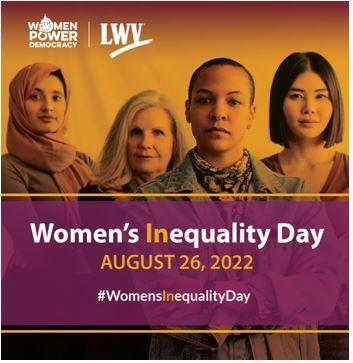
On August 26, we observed Women’s Equality Day. First celebrated in 1971, it marks the certification of the Nineteenth Amendment to the U.S. Constitution in 1920. That amendment prohibits the states and the federal government from denying the right to vote to citizens of the United States on the basis of sex. The following text is excerpted from Winning the Vote: The Triumph of the American Woman Suffrage Movement, by Robert P. J. Cooney, Jr. (as posted on the California Secretary of State website at https://www.sos.ca.gov/elections/celebrating-womens-suffrage/california-women-suffrage-centennial).
When male voters went to the polls in California in 1911, one of the questions on the ballot was: Should women be allowed to vote? . . .
In 1896 women in California had lost their first contest for the right to vote. When conditions suddenly changed in 1910 and a progressive Republican administration was swept into power, woman suffragists seized the opportunity and successfully lobbied the state legislature to put the question before the voters. . . .
Elizabeth Lowe Watson, a former pastor, led the California Equal Suffrage Association in northern California. The less populated south was covered by two organizations, the Political Equality League founded by Pasadena businessman John Hyde Braly, and the Votes for Women Club led by attorney Clara Shortridge Foltz. These and other groups mobilized over 10,000 local supporters—teachers, college women, wage earners and veteran suffragists—to carry out the vast statewide drive. . . .
Suffragists spoke to voters in the streets and from automobiles. They held mass rallies, picnics and small meetings. They addressed congregations, unions, factory workers, women’s clubs and any audience they could find. “I appeal to you as a mother, a grandmother, as a garment worker, a school teacher, a trained nurse . . . as the case might be,” was one of the most popular opening lines when addressing a crowd. . . .
Just before the election, 10,000 people gathered for a final “monster rally” in San Francisco, which was followed by fireworks and a band concert. But on Election Day, October 10, 1911, the measure was soundly defeated in the San Francisco Bay Area and just barely passed in Los Angeles. Disheartened and disappointed, suffragists began to plan yet another campaign when late reports from the far flung counties began to swing the vote in their favor.
When the long count was finally completed several days later, Equal Suffrage had passed by only 3,587 votes—an average majority of one vote in each precinct in the state! The final tally was 125,037 to 121,450. As suffragists had hoped, work in the rural districts successfully overcame the more organized opposition in the cities. With the passage of votes for women in California, the number of women with full suffrage in the U.S. doubled, and San Francisco became the most populous city in the world in which women could vote.
The California campaign helped re-ignite state campaigns across the nation and set a new standard for vibrant public outreach, systematic organizing and innovative approaches. Women throughout the country were exultant and gained new hope that efforts in their own states might yet be successful. With each additional victory, suffragists built up the political power they needed to win passage and ratification of the 19th Amendment to the Constitution, which guaranteed women the right to vote in all the states. The Amendment was finally approved on August 26, 1920, a date now officially recognized as Equality Day.
Why “Inequality” this year? Women’s Equality Day commemorates the ongoing fight for de facto equality for all women. Today the fight is more challenging than ever. We have seen the erosion of voting rights, reproductive freedom, and other rights and liberties. As noted on the LWVUS website, “in 2022, women have fewer rights than they’ve had in decades.” This year the League acknowledged Women’s Inequality Day, uniting to demand that lawmakers restore and protect our rights by:
- passing voting rights legislation;
- adding the Equal Rights Amendment to the Constitution; and
- restoring reproductive rights to women and those who can become pregnant.
To help in this effort, please see LWV-PA’s Take Action Summary page and support voting rights legislation, women’s reproductive rights, and the now-ratified Equal Rights Amendment by continuing to contact your representatives and senators.